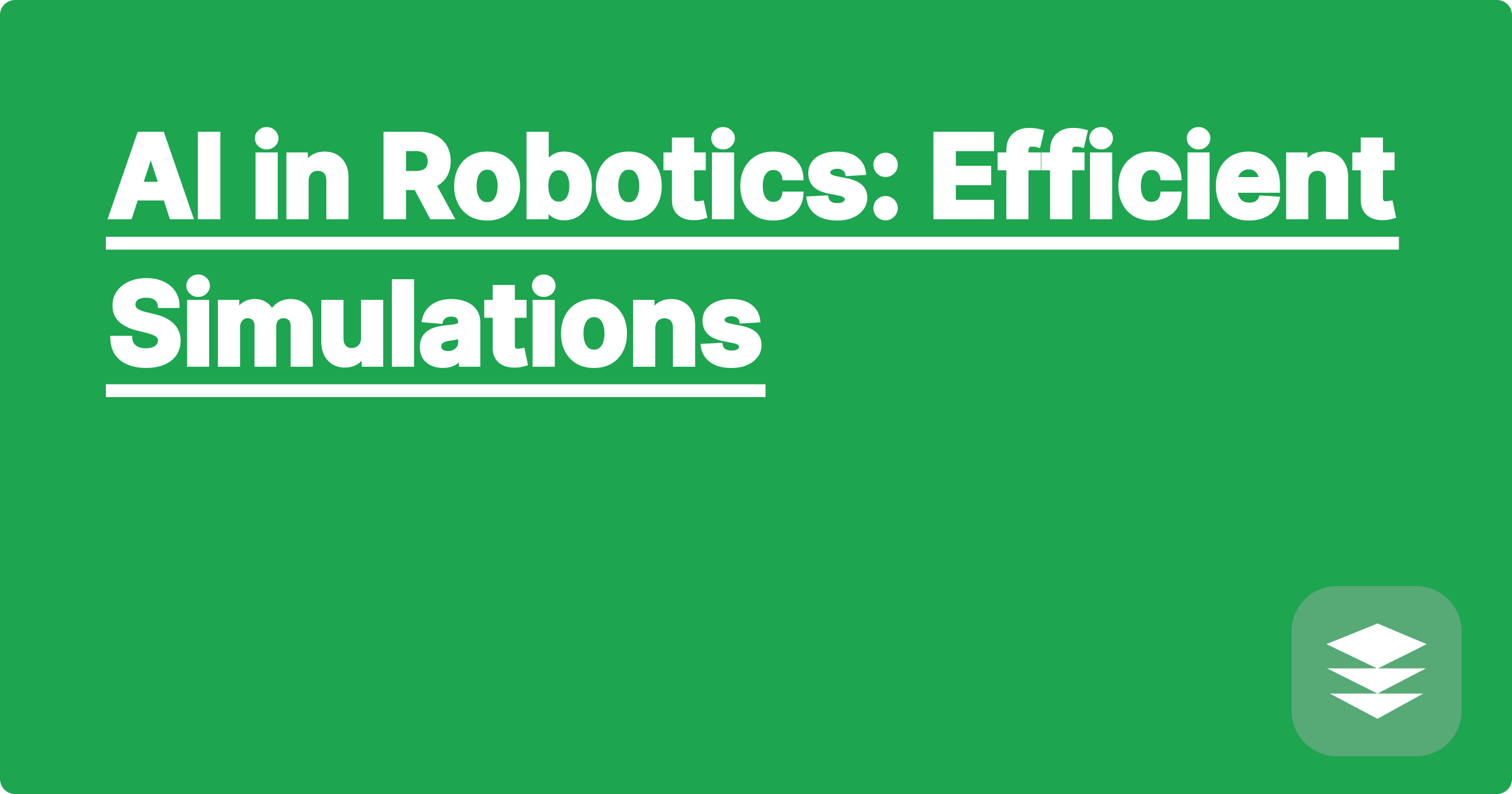
The world of STEM research is evolving at an unprecedented pace, demanding ever-increasing efficiency and innovation. For STEM students and researchers, this translates to a constant struggle to keep up with the latest advancements while juggling complex projects, data analysis, and the ever-looming deadlines. Fortunately, the rise of Artificial Intelligence (AI) offers a powerful arsenal of tools to streamline workflows, enhance productivity, and unlock new research possibilities. This blog post delves into the exciting intersection of AI and robotics, focusing on how efficient simulations can revolutionize your research process. We'll explore the specific challenges faced by researchers in this field and how AI-powered tools can provide practical solutions, ultimately maximizing your research output and impact.
Imagine having a virtual AI partner that can tirelessly run simulations, analyze massive datasets, and even suggest innovative solutions. This isn't science fiction; it's the reality of AI-driven research in robotics today. By leveraging these powerful tools, you can significantly reduce the time spent on tedious tasks, freeing up valuable time for creative thinking, experimental design, and in-depth analysis. We'll explore practical examples, step-by-step implementations, and tips for effectively integrating AI into your robotics research, ultimately empowering you to achieve academic success.
Robotics research heavily relies on simulation environments to test and refine algorithms before deploying them on physical robots. Traditional simulation methods can be computationally expensive and time-consuming, especially when dealing with complex robotic systems and real-world scenarios. Developing accurate physics engines, modeling intricate environments, and generating realistic sensor data are just a few of the challenges researchers face. These limitations can hinder the pace of innovation and restrict the scope of research projects. Furthermore, analyzing the vast amounts of data generated by these simulations can be a daunting task, requiring specialized expertise and significant computational resources. The complexity of interpreting simulation results often leads to bottlenecks in the research process, delaying progress and limiting the ability to explore a wider range of design parameters and control strategies.
AI offers a transformative approach to robotics simulations, enabling researchers to overcome these challenges and significantly boost their productivity. AI algorithms can accelerate simulation speeds, optimize simulation parameters, and automate data analysis. For instance, tools like ChatGPT and Claude can be used to generate code for robotic simulations, automate report writing, and even brainstorm research ideas. Wolfram Alpha, with its powerful computational capabilities, can be leveraged for complex mathematical modeling, data analysis, and visualization. Imagine using ChatGPT to generate Python code for a specific robot arm simulation in a physics engine like PyBullet. You could then use Wolfram Alpha to analyze the simulation data, identify trends, and visualize the results in interactive plots. This integrated approach allows researchers to focus on the core aspects of their research, leaving the heavy lifting to AI-powered tools.
Let's consider a scenario where you are developing a control algorithm for a mobile robot navigating a complex environment. First, define the environment and robot model within your chosen simulation platform (e.g., Gazebo, PyBullet). Then, use ChatGPT to generate the basic code structure for your control algorithm, specifying the desired behavior and input parameters. Next, refine the code and integrate it with the simulation environment. Run multiple simulations with varying parameters, collecting data on robot performance metrics like trajectory accuracy, time to goal, and energy consumption. Finally, utilize Wolfram Alpha to analyze the collected data, identify optimal parameter settings, and generate visualizations to illustrate the robot's performance. This streamlined workflow, powered by AI, drastically reduces the time and effort required for iterative design and optimization.
AI-powered simulations are already transforming various STEM fields. In biomechanics, researchers are using AI to simulate human movement and predict injury risks, leading to improved prosthetic designs and rehabilitation strategies. In materials science, AI is being used to simulate the properties of new materials, accelerating the discovery of novel compounds with desired characteristics. For example, researchers can use AI to predict the tensile strength of a composite material based on its constituent elements and manufacturing process, reducing the need for time-consuming and expensive physical experiments. In aerospace engineering, AI-driven simulations are optimizing aircraft designs for improved fuel efficiency and aerodynamic performance, leading to more sustainable and efficient air travel.
To effectively leverage AI in your research, embrace continuous learning and explore the diverse range of available tools. Start by identifying specific tasks in your workflow that can be automated or enhanced by AI. Experiment with different tools and platforms to find the best fit for your research needs. Don't be afraid to seek guidance from online communities and forums dedicated to AI in STEM. Collaborate with peers and share your experiences to accelerate the adoption of these powerful tools. Remember that AI is a tool to augment your research capabilities, not replace them. Focus on developing a strong understanding of the underlying principles and critically evaluate the results generated by AI algorithms.
By embracing AI-powered simulations and data analysis, you can significantly enhance your research productivity, accelerate the pace of discovery, and unlock new possibilities in your chosen STEM field. Start exploring these powerful tools today and embark on a journey of accelerated innovation. The future of STEM research is here, and it's powered by AI.
AI in Robotics: Efficient Simulations
GPAI: Your AI Study Partner for STEM
AI Research Notes: Organize Smartly
Ace STEM Exams: AI Study Partner
AI in CAD: Design Smarter, Faster
AI for Chemistry: Equation Ace
AI for Biology: Data Visualization
AI for Simulations: Optimize Results